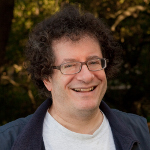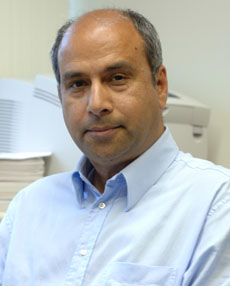| ICVS 2011 |
| 8th International Conference on Computer Vision Systems |
| 20 - 22 September 2011, Sophia Antipolis (France) |
|
|
Home |
|
|
|
KEYNOTES SPEAKERS

|
|
Dr Gary Bradski
Willow Garage on OpenCV
|
| |
Bio: Gary Bradski is senior scientist at Willow Garage (a robotics incubator) and a consulting Professor at Stanford where he researches and teaches robot perception. He founded OpenCV and still runs it. Gary organized the vision team on Stanley the robot that won the $2M Darpa Grand Challenge and helped found the STAIR project at Stanford (Stanford AI Robot). He is on the board of advisors to http://occipital.com/, a mobile app computer vision company.
|
| |
Abstract : Creating Perception Systems using OpenCV
The Open Source Computer Vision Library (OpenCV) is now used extensively around the world, approaching 3M downloads with an active user group of over 45,000 people. OpenCV is getting development support from Willow Garage, NVidia and Google as well as wide spread community contributions. Some of the main environments that OpenCV supports are: Linux, Windows, Mac OS, Android and iPhone ... along with a host of robots through ROS, the Robot Operating System.
This talk will overview OpenCV: where it is and where it is going, including a program to standardize a slimmed down core subset of OpenCV into the Khronos standard to allow hardware manufactures to better build optimize vision hardware around it. I will highlight some recent functions and then demonstrate a new development too
l that allows a programmer to code mostly in Python but have the runtime system run entirely in C++ also guaranteeing synchronization for 2D and 3D data.
This environment will further allow the developer to package their functionality as a standalone module or as a node in ROS and to seamlessly store and retrieve data, models and parameters to and from a database. We are using this system to develop object recognition and SLAM applications for robotics. I will demonstrate some of this functionality.
|
| |
|
|
 |
|
Joe Stam
NVIDIA |
| |
Bio: Joseph Stam is Manager for Mobile Computer Vision at NVIDIA Corporation.
His focus is promoting the use of computer vision on NVIDIA's Tegra
processors by working closely with application developers and building
vision tools and libraries. He has also worked in NVIDIA's professional
graphics and automotive business units. Prior to joining NVIDIA in 2007,
Joe worked in the automotive industry for 12 years on research and
development of imaging hardware and computer vision algorithms for vehicle
based vision products. Joe received a B.S. degree in Engineering Physics &
Computer Science from Hope College in Holland, Michigan and an M.S. degree
in Electrical Engineering from Michigan State University. He is an
inventor on over 80 U.S. patents and several foreign patents, many of
which relate to computer vision algorithms and imaging hardware
technologies.
|
| |
Abstract: Vision Everywhere: An overview of vision on mobile consumer devices and
popular PC hardware
For the past couple decades computer and machine vision technology served
largely in scientific and industrial applications such as factory
automation or medical imaging. Many factors limited wide adoption,
including the prohibitive cost of sufficient processing power and
availability of suitable cameras.
The last several years have ushered in a huge surge in the use of vision
for mainstream consumer applications. Vision had become the latest craze
for video game consoles, and with over a billion camera phones sold every
year powerful vision capable devices will be in everyone's pocket. In this
session, we'll provide an overview of the latest parallel processors for
computer vision, focusing particularly on NVIDIA's Tegra processors and
GPU computing architectures. We'll also highlight the latest development
tools and libraries for mobile vision application development.
|
| |
|
|
 |
|
Prof Mubarak Shah
University of Central Florida |
| |
Bio:Dr. Mubarak Shah, Agere Chair Professor of Computer Science, is the founding director of the Computer Visions Lab at UCF. His research interests include: video surveillance, visual tracking, human activity recognition, visual analysis of crowded scenes, video registration, UAV video analysis, etc. Dr. Shah is a fellow of IEEE, AAAS, IAPR and SPIE. In 2006, he was awarded a Pegasus Professor award, the highest award at UCF. He is ACM distinguished speaker. He was an IEEE Distinguished Visitor speaker for 1997-2000 and received IEEE Outstanding Engineering Educator Award in 1997. He received the Harris Corporation's Engineering Achievement Award in 1999, the TOKTEN awards from UNDP in 1995, 1997, and 2000; Teaching Incentive Program award in 1995 and 2003, Research Incentive Award in 2003 and 2009, Millionaires' Club awards in 2005 and 2006, University Distinguished Researcher award in 2007, honorable mention for the ICCV 2005 Where Am I? Challenge Problem, and was nominated for the best paper award in ACM Multimedia Conference in 2005. He is an editor of international book series on Video Computing; editor in chief of Machine Vision and Applications journal, and an associate editor of ACM Computing Surveys journal. He was an associate editor of the IEEE Transactions on PAMI, and a guest editor of the special issue of International Journal of Computer Vision on Video Computing.
|
| |
Abstract: Video Surveillance Systems - UCF Computer Vision Lab Experience
Video surveillance and monitoring is one of most active areas of research in Computer Vision. The main steps in a video surveillance system include: detection and categorization of objects of interest in video (e.g. people, vehicles), tracking of those objects from frame to frame, and recognition of their activities, behavior and patterns. Illumination changes, shadows, occlusion and clutter etc make moving object detection difficult. Dealing with occlusion and object interaction in high density scenes, and tracking across multiple overlapping and non-overlapping field cameras are some of the challenges in tracking. Activity recognition is an area of active research and learning based solutions seem to be the most promising ones and there are still many challenges to be addressed. Over the last decade a number of prototype Surveillance Systems have been developed at UCF Computer vision lab, employing in-house developed point solutions for above components.
In this talk I will first present key techniques in object detection, tracking and activity detection, then discuss the software engineering aspects of two of those systems namely: KNIGHT: Ground Surveillance System for low density scenes, and COCOA - a solution for tracking moving objects in aerial videos. I will discuss the lifecycle of systems developed in a typical academic environment, the typical code quality issues encountered and efforts being undertaken to improve continuously.
|
| |
|
|
|
|
| |
|
|
|
|
last update :
08/30/2011
-
webmaster
- credits
|
|